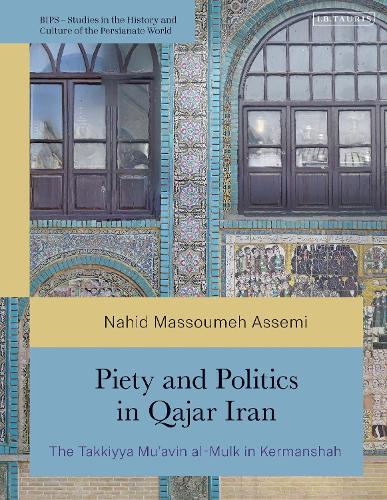
Piety and Politics in Qajar Iran: The Takkiyya Muavin al-Mulk in Kermanshah
(Hardback)
Available Formats
Publishing Details
Piety and Politics in Qajar Iran: The Takkiyya Muavin al-Mulk in Kermanshah
By (Author) Nahid Massoumeh Assemi
Bloomsbury Publishing PLC
I.B. Tauris
18th April 2024
United Kingdom
Classifications
Tertiary Education
Non Fiction
Architecture: religious buildings
Islamic groups: Shiah, Shiite
726.2
Physical Properties
Hardback
288
Width 198mm, Height 248mm, Spine 22mm
812g
Description
The Takkiyya Muavin al-Mulk is a building complex in the city of Kermanshah in western Iran, dedicated to the annual commemoration of the martyrdom of Husayn ibn Ali at the Battle of Karbala in 680, an event of seminal significance to Shii Islam. Private takkiyyas built by social elites were a phenomenon of the Qajar period, with their construction motivated by a political quest for legitimacy. This book examines the intersection of art and architecture, popular piety, and the politics of legitimation. Through an examination of the building and its decorative programme, it addresses issues of patronage, Shii iconography and popular religious practices during the early 20th century in Iran. It further argues for the role of takkiyyas in creation of a sense of community and group identity; the formative stage of the emergent idea of nationhood at the time, amongst those who frequented them.
Author Bio
Nahid Massoumeh Assemi is an independent scholar who specializes in the art and architectural history of Qajar Iran. She has published articles in the peer-review journal Iran. She is a Bahari Visiting Fellow at the Bodleian Libraries, 2023-24 and a member of the Contemporary Art Council of the Iran Heritage Foundation. She holds a PhD from the Courtauld Institute of Art, London and an MA in Fine Arts from Ecole des Beaux Arts in Paris where she was trained as a classical artist. She is also a miniaturist, illuminator and calligrapher working on commission.
